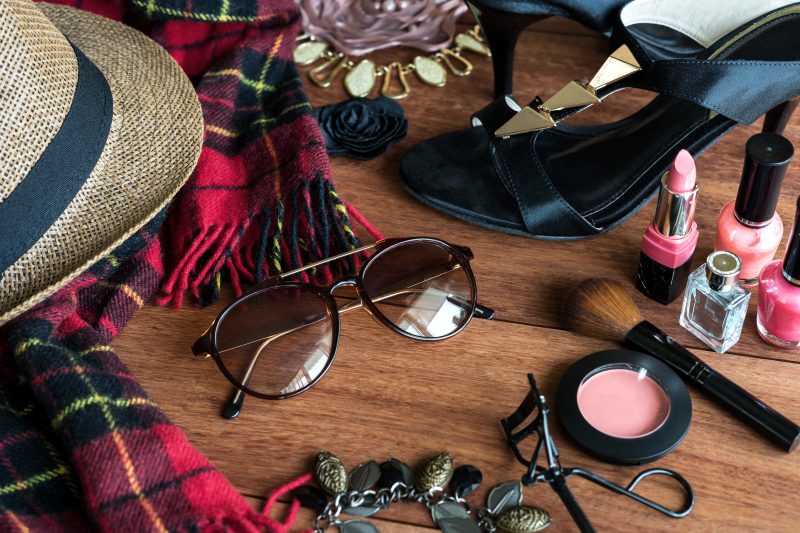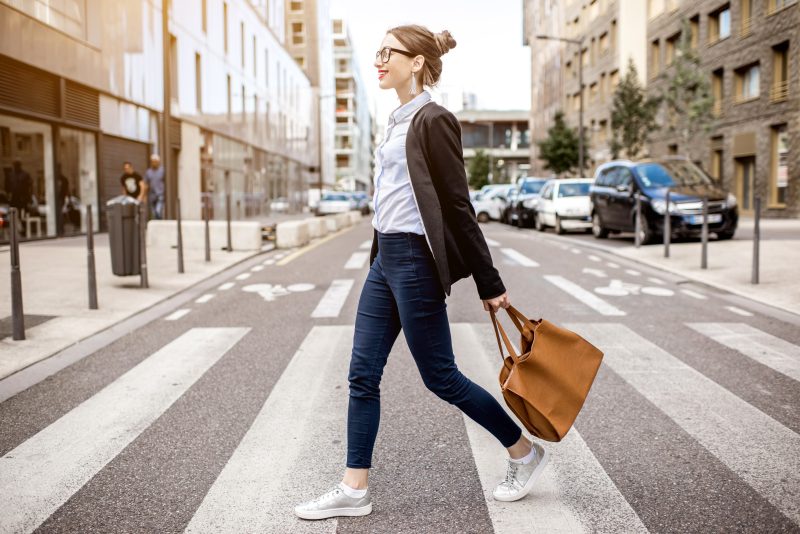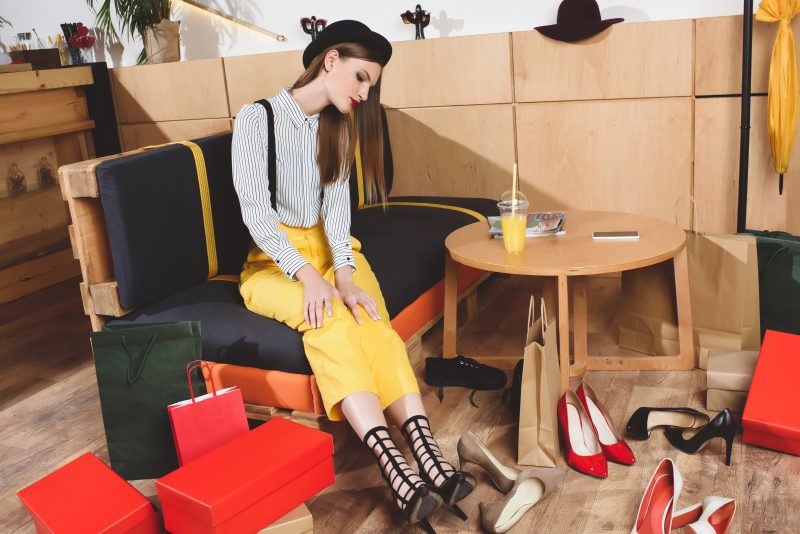Let me be completely honest with you – I shop at Primark more than someone with my salary probably should. There, I said it. When you’re trying to maintain a professional wardrobe on a finance salary that’s good but not “drop $300 on a blazer without thinking twice” good, you learn to get creative. And by creative, I mean I’ve become an absolute master at making a $15 dress look like something I could’ve picked up at COS.
Last month I was rushing through the Financial District trying to grab lunch between meetings when I ran into Sarah from our compliance team. She complimented my outfit – a black sheath dress that I’d belted and paired with simple gold jewelry. “That’s such a classic piece,” she said, “where’s it from?” I mumbled something vague about having it forever because honestly, how do you tell a colleague that your entire look cost less than her Starbucks habit?
The dress was from Primark. Twelve pounds. The belt that made the whole thing work? That’s where I actually spent money.
Here’s what I’ve figured out after years of navigating business casual on a budget that’s… well, let’s just say it’s not unlimited. You can absolutely build a professional wardrobe without breaking the bank, but you need to be strategic about where you invest. And accessories – good accessories – are what separate the “clearly shopping on a budget” look from “she has great taste.”
I learned this the hard way during my first year out of business school. I was so focused on buying multiple “professional” pieces that I spread my money too thin and ended up with a closet full of mediocre everything. Cheap blazers that looked cheap, shoes that hurt my feet, bags that fell apart after three months. It was my mom who finally sat me down and said, “Baby, buy fewer things but buy them better. One good belt will do more for your wardrobe than five okay dresses.”
She wasn’t wrong. That woman has been making strategic wardrobe investments since before I was born, and she’s the reason I know the difference between looking expensive and actually spending a fortune.
My go-to strategy now? I buy basics from places like Primark, Zara, and even Target when I’m visiting family in Atlanta. Then I invest in accessories that elevate everything. A really good belt – and I mean really good, not just “looks okay from far away” – can transform a shapeless dress into something that looks intentional and polished.
The belt I was wearing when Sarah complimented my outfit cost me $85 from Cuyana three years ago. I know that sounds like a lot for a belt, but think about cost per wear. I’ve worn that thing at least twice a week for three years. It’s made probably fifty different cheap dresses look like actual investment pieces. The math works out to something ridiculous like thirty cents per wear at this point.
It’s a simple cognac leather with a small gold buckle – nothing flashy or trendy that’ll look dated in two years. The leather has actually gotten better with age, which is what happens when you buy quality instead of just buying cheap. I’ve worn it with everything from Primark shift dresses to my one expensive Theory blazer, and it makes everything look more expensive by association.
Jewelry is another area where I’ve learned to spend strategically. I have a small collection of gold pieces – nothing fancy, mostly from brands like Mejuri or Aurate when they’re having sales – that I mix and match with everything. Simple gold hoops, a delicate chain necklace, a classic watch with a leather band. These pieces make my Target blouses look deliberate instead of desperate.
The watch was probably my best investment. I found it at Nordstrom Rack for $120, marked down from something much higher. It’s got a white face with a tan leather strap and looks expensive enough that people assume the rest of my outfit is equally well-chosen. I wear it every single day, and it’s held up perfectly for two years now.
My jewelry strategy is basically capsule wardrobe thinking applied to accessories. A few really good pieces that work with everything instead of a bunch of trendy stuff that only works with specific outfits. I can make a basic black dress from Primark look boardroom-appropriate just by adding my watch, small gold hoops, and that belt. Total outfit cost might be $30 for the clothes, but it looks like I spent ten times that.
Shoes are trickier because cheap shoes really do look cheap, and more importantly, they feel cheap. I learned this lesson the hard way during my first year in Boston when I tried to get by on $40 pumps from Target. My feet were destroyed, and the shoes looked terrible after about a month of commuting on the T.
Now I buy fewer pairs but spend more per pair. I’ve got three pairs of work-appropriate heels that I rotate – black pumps, nude pumps, and black loafers – and they each cost between $150-200. Sounds like a lot until you realize I wear these shoes almost every day and they still look good after two years. The black pumps are from Cole Haan and they’re actually comfortable enough for a full day of meetings plus drinks after work.
My handbag strategy follows the same logic. Instead of buying multiple cheap bags that fall apart, I invested in two really good ones – a black leather tote for work and a smaller crossbody for evenings and weekends. The tote was $280 from Everlane, which felt like a huge splurge at the time, but I’ve carried it almost every day for three years. It still looks new, holds everything I need for work, and makes whatever I’m wearing look more polished.
The thing about being a Black woman in corporate finance is that everything I wear gets scrutinized differently. I can’t look too trendy or too casual or too anything, really. My accessories have to walk this fine line between polished and approachable, professional but not boring. It’s exhausting, honestly, but good accessories help me hit that sweet spot more consistently.
I remember my first week at my current job, I wore what I thought was a perfectly acceptable outfit – navy dress from Zara, basic black flats, no jewelry. Professional enough, right? Wrong. I looked… forgettable. Bland. Like I was trying to disappear instead of trying to succeed. My manager (who’s amazing and has become a mentor) pulled me aside later and suggested I “add some personality” to my look.
That’s when I realized that in corporate America, especially for women of color, your accessories aren’t just accessories – they’re part of your professional brand. The right pieces can signal confidence, attention to detail, and yes, success. It’s not fair that we have to think about this stuff, but we do.
My scarves have been game-changers for adding that “personality” without being too bold. I’ve got a collection of silk squares – some vintage finds from estate sales, some from brands like Everlane or & Other Stories – that I wear tied around my neck or as headbands. They add color and interest to basic outfits without being distracting in meetings.
There’s this one vintage Hermès scarf I found at an estate sale in Beacon Hill for $45. It’s probably from the ’80s and has this gorgeous chain print in gold and navy. When I wear it with a simple white button-down and black trousers (both from Uniqlo), people assume the whole outfit is expensive. The scarf does all the heavy lifting.
Sunglasses might seem like a weird thing to invest in for professional reasons, but think about it – you wear them walking to and from the office, during lunch breaks, on work trips. Good sunglasses make you look put-together even when you’re just commuting. I spent $150 on a pair of classic Ray-Ban Wayfarers two years ago and they’ve been worth every penny. They go with everything and never look dated.
Hair accessories have made such a comeback, and they’re perfect for adding polish to simple outfits. I’ve got a collection of hair clips and headbands – mostly from Machete or Jenny Bird when they’re on sale – that can make a basic ponytail look intentional and chic. When I’m having a bad hair day or running late, a good hair clip can save my entire look.
The key with all of this is buying pieces that work together and with multiple outfits. Every accessory I invest in has to pass what I call the “five outfit test” – can I immediately think of five different ways to wear it? If not, I don’t buy it, no matter how much I love it in the moment.
My current obsession is this gold chain necklace from Mejuri that I saved up for and bought during their holiday sale. It was $180, which felt crazy for a necklace, but I wear it with everything. Over turtlenecks, under blazer lapels, with simple t-shirts on weekends. It makes every outfit look more expensive and put-together.
I also have to mention bags again because they’re probably the accessory that gets noticed most in professional settings. Your bag says a lot about you – are you organized? Do you pay attention to details? Can you invest in quality pieces? I know it’s superficial, but it matters in corporate environments.
The best bag investment I ever made was actually a vintage Coach tote I found on TheRealReal for $120. It’s from the ’90s when Coach still made everything in the US, and the leather quality is incredible. I get compliments on it constantly, and it holds up to daily commuting like a champ. Plus, there’s something to be said for carrying a bag with actual heritage instead of just trying to look expensive.
What I love about this approach to building a wardrobe is that it’s actually sustainable, both financially and environmentally. Instead of constantly buying new cheap things that fall apart, I’m investing in pieces that last. My accessories make everything else in my closet work harder, so I need fewer clothes overall.
Don’t get me wrong – I still love finding a good deal at Primark or scoring something amazing at Zara. But now those purchases are strategic. I know exactly which accessories I have at home that’ll make that $15 dress look like something I could wear to client meetings.
The math really does work out. When you invest in good accessories, your entire wardrobe gets elevated. That $85 belt has probably saved me thousands in clothing costs over the years because it makes everything I own look better. Same with my good shoes, my jewelry, my bags. They’re the supporting actors that make all the budget pieces look like stars.
And here’s the thing nobody talks about – when you look put-together, you feel more confident. When I’m wearing an outfit that I know looks expensive (even though it wasn’t), I carry myself differently. I speak up more in meetings. I’m more likely to ask for what I want. Good accessories are an investment in your professional presence, not just your wardrobe.



